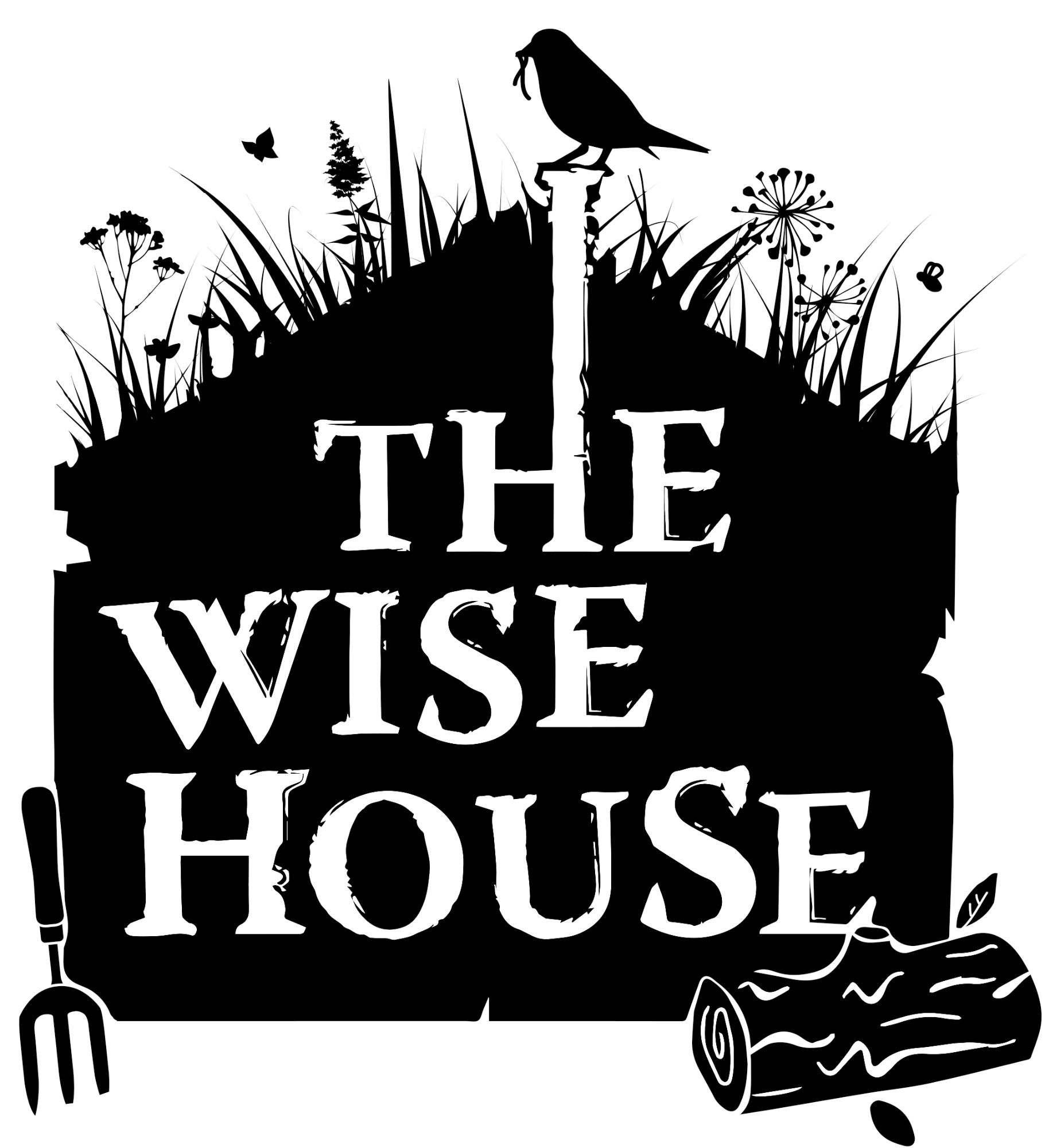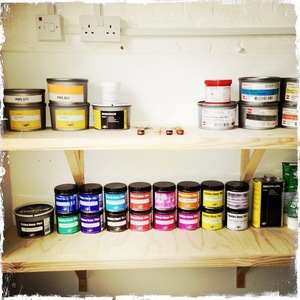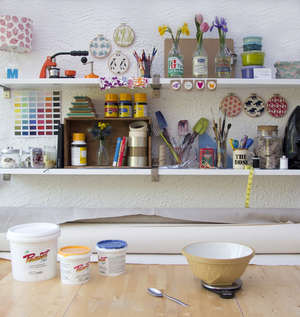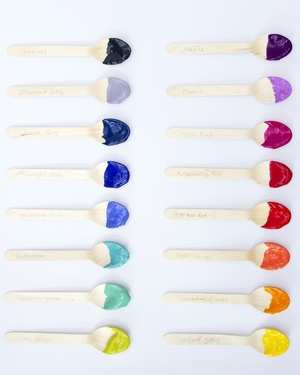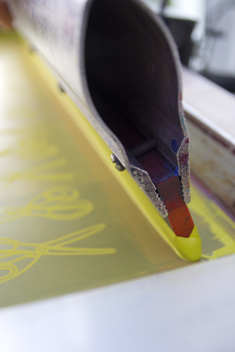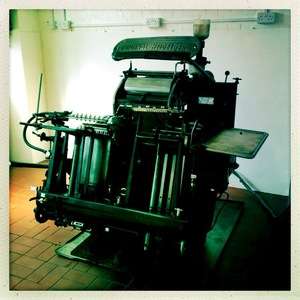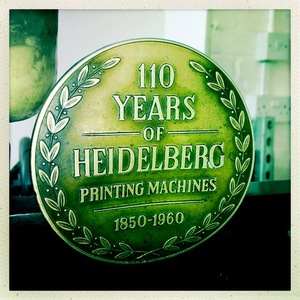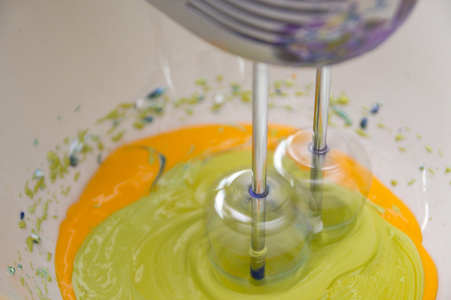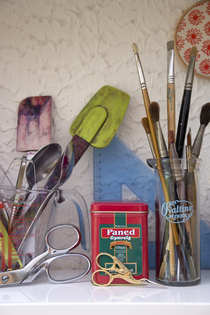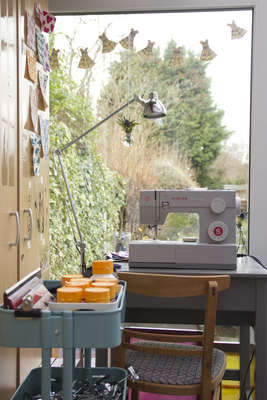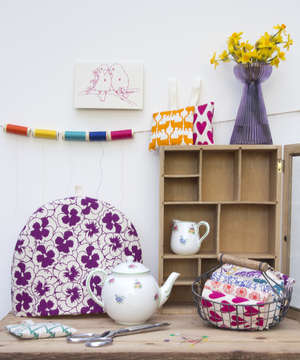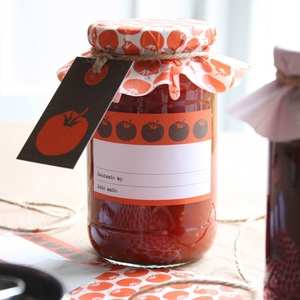Goodbye Clingfilm. Hello Bee's Wrap.
Posted on
We are delighted to be the UK’s first stockist of Bee’s Wrap, an eco-friendly, reusable alternative to modern food wrap such as clingfilm and foil. Bee’s Wrap is made from an organic muslin cloth steeped in beeswax, jojoba oil and tree resin. It comes in a variety of sizes and can be used to cover bowls and wrap a wide range of foodstuffs; from sandwiches and onion halves to lumps of cheese and half eaten fruit and vegetables (it can currently be found housing an avocado in my fridge).
Bee’s Wrap has all of the plusses of plastic wrap; it is malleable, water resistant and airtight with the added bonus of keeping food fresh due to the antibacterial properties of the natural oils.
Most fantastic of all, you can avoid all of the downsides of using plastic wrap; the chemicals used to make the plastic soft, the fact that clingfilm is inherently non-recyclable and non-renewable, not to mention the problem clingfilm poses to wildlife if not disposed of properly. You can also save yourself a pretty penny as Bee’s Wrap products can be re-used for up to one year.
Bee’s Wrap is the mastermind of Sarah Kaeck, a mum-of-three living in Vermont, USA. Kaeck lives the ‘good life’, growing her own vegetables and rearing chicken, pigs and goats. In line with this organic lifestyle she wanted to find a sustainable and toxic free alternative to plastic wrap for storing her half eaten fruit and vegetables.
Since its launch Bee’s Wrap has taken off spectacularly in the USA and is now sold in over a dozen states. This has created a small industry for Kaeck who now employs a group of local women to help with production. Bee’s wrap is also now sold in over 12 countries internationally.
At The Wise House we currently stock all lines of the Bee’s Wrap products; the Assorted Pack at £14.50 (a great starter pack containing a small, medium and large wrap). Choose from the original honeycomb print, clover floral print and geometric print. The Sandwich Wrap at £9.50, available in the original and clover print.The Bread wrap is fantastic for keeping bread fresh, at £13 for the classic size and £11 for the baguette wrap.
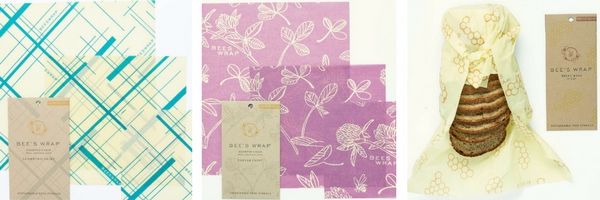
I am currently using both the Sandwich Wrap and the Bread Wrap. I’m suitably impressed with how well it works. It definitely keeps food fresher, something I’ve noticed in particular with the bread as it used to be on the dry side by day two. The smell is pleasant, fairly strong at first but fades quickly with use. I'm delighted not to have to get the clingfilm roll out every day!
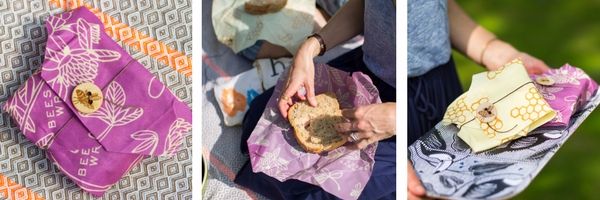
The Sandwich Wrap is really useful for my son’s lunchbox and can be used for a sandwich, wrap or pitta. It even survived the explosion of an entire strawberry yoghurt over it the other day! I like the string and toggle which gives it some extra security.
Questions & Answer Session
How do you use Bee’s Wrap?
The warmth and pressure of the hands moulds the wrap to the food or bowl, keeping it secure and airtight. When the wax cools (almost immediately) a seal is created. The Sandwich Wrap has the added bonus of string and a wooden toggle fastening, making it even easier to secure and perfect for lunchboxes.
What can you wrap?
The Bee’s Wrap can be used to wrap cheese, vegetables, bread, and baked goods. The Sandwich Wrap can be used for pitta bread, wraps and rolls as well as sandwiches. The Assorted Pack contains a small, medium and large wrap sheets for use across all foodstuff and bowls. The Bread Wrap is extra large and suitable for loaves as well as cakes.
It is not recommended for raw meat as it can't be washed at a high temperature.
"The beeswax and jojoba oil have antibacterial qualities," explains Kaeck. ‘This keeps the wrap fresh and aroma free.’
How do you clean the wrap?
Once you have finished with the food within, shake excess crumbs into the bin and wipe down with a damp cloth using cool water. You can use mild dish soap. Hang out flat and it will dry very quickly.
Is Bee's Wrap bee friendly?
Promoting a healthy bee population is vital to their ethos over at Bee's Wrap head quarters. They carefully evaluate the beekeeping operation for environmental impact, a healthy bee environment, and a quality end product. The evaluation considers forage quality, use of pesticides and medications, and feeding and harvesting practices. They also evaluate hive construction, human intervention of natural bee cycles, and filtering processes.
The beeswax is never chemically altered or bleached, and is tested by the USDA for 200 pesticides and herbicides, ensuring the use of the cleanest possible wax. They are currently working with beekeepers in Iowa, Pennsylvania and New York.The beeswax we use is merely a byproduct of the honeycomb. They use cappings wax only.
We'd love for you to give Bee's Wrap a try. We can all do our bit for the environment and save a few pennies in the process...#hellobeeswrapgoodbyeclingfilm
A selection of customer reviews for Bee's Wrap;
'Love the bees wrap! Such a beautiful product. Smells so good - lovely and clean. Plastic wrap is a thing of the past for packed lunches. Gorgeous site with everything so well presented. Easy to order and quick delivery! Thank you'(Karen)
'Great customer service. I'm loving my bees wrap -- such a great and environmentally friendly product. Worth the money. Thank you!'(Rachel)
'My packs of Bee's Wrap arrived today, and was beautifully gift wrapped by Lucy at The Wise House. This attention to detail in customer service seems to have long gone with online purchases and so it was a nice surprise to receive on delivery. It smells good with the natural oils in the Wrap too, looking forward to using it.'(Sofia)
'Bee's Wrap is super! I love it. Your packaging and your service was impeccable. I am recommending you to friends.'(Rachel)
'The Bee's Wraps are wonderful. I bought the pack of 3 different sizes and loved them so much I then bought the sandwich wrapper too. My husband thinks they smell great and they are so much nicer to use than cling film. Brilliant!'(Michelle)
'So excited to receive the products.. being able to send my son to school and using no plastic has been so liberating.. Fantastic product.. and they were so beautifully wrapped by you it felt like I had received a gift... Delivery was super quick too..'(Tracey)
